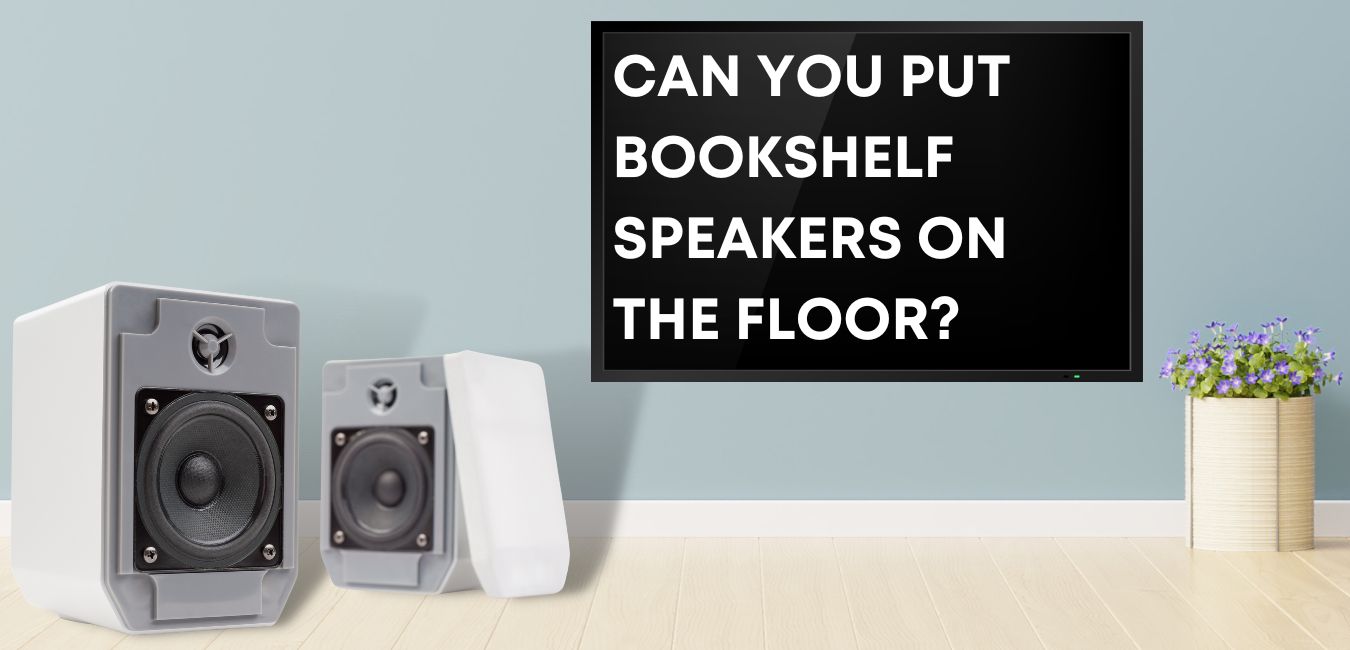Imagine this: You’ve just invested in a beautiful pair of bookshelf speakers, eager to experience the magic of high-fidelity sound. You unpack them, admiring their sleek design, only to pause with a question: can these speakers actually be placed on the floor? It seems like a simple question, but the answer isn’t always as straightforward as it might appear. In this comprehensive guide, we’ll delve into the intricate world of bookshelf speaker placement, exploring factors that affect sound quality and offering expert advice to help you achieve the best listening experience possible.

Image: worldsbeststereo.com
Bookshelf speakers, known for their compact size and surprisingly powerful sound, are a popular choice for audiophiles and casual music lovers alike. They fit seamlessly into diverse spaces – from living rooms and bedrooms to home offices and even smaller apartments. But while their versatility is undeniable, the choice of placement – floor or shelf – can significantly impact how your music comes to life.
The Acoustic Landscape: Factors Affecting Sound Quality
The magic of sound is rooted in physics. When sound waves are produced by your speakers, they travel through the air, vibrating our eardrums, and creating the auditory sensations we perceive as music. However, the journey of these sound waves isn’t always smooth sailing. Obstacles like walls, furniture, and even the floor itself can interfere with their path, impacting the clarity and richness of the audio we hear.
1. Bass Frequencies and Surface Reflections:
One of the key factors to consider when placing bookshelf speakers is their size and the way they handle bass frequencies. Bookshelf speakers, by their design, tend to have a smaller cabinet size, which often translates to a slightly less robust bass response compared to larger floor-standing speakers.
When these speakers are placed directly on the floor, the vibrations from the bass frequencies can transfer into the floor, creating a phenomenon known as “bass coupling.” This coupling can cause the bass to sound muddy and undefined, as the speaker struggles to move freely and deliver a clear, punchy low-end. It’s like trying to sing with your mouth pressed against a pillow – the sound is muffled and lacks its natural resonance.
2. Soundwave Reflection & Diffraction:
The floor, like any reflective surface, can interfere with the smooth propagation of sound waves. When sound waves encounter a hard surface, they bounce back in various directions, creating reflections that can degrade the overall sound quality. Imagine standing in a large empty room – the sound echoes and reverberates, making it difficult to hear a clear, direct sound.
3. Speaker Position & Soundstage:
The placement of your speakers also significantly affects the soundstage. The soundstage refers to the perceived width and depth of the musical performance. In an ideal scenario, your speakers should be placed at ear level and at a comfortable distance to create a sense of spaciousness and realism. Placement on the floor, particularly if the speakers are positioned too low, can disrupt the perceived soundstage, making the music sound compressed and lacking depth.
The Floor: Friend or Foe?
So, the question remains: can bookshelf speakers be placed on the floor? The short answer is: it depends. Determining the best placement for your bookshelf speakers requires an understanding of your individual listening environment and your priorities in terms of sound quality.
1. If You Prioritize Precise Sound & Detail:
If you’re an audiophile seeking the most accurate and detailed sound reproduction, placing your bookshelf speakers on dedicated stands is often the preferred choice. Stands elevate the speakers to ear level, minimizing floor reflections and promoting a more balanced soundstage. The added height also allows for more direct sound to reach your ears, resulting in a clearer and more nuanced listening experience.
2. If You’re Limited on Space & Flexibility is Key:
However, if you’re dealing with limited space or prefer a more minimalist setup, placing your bookshelf speakers on shelves or even directly on the floor can still be viable options.
3. Floor Placement: Strategies for Success:
If you choose to go the floor route, here are some strategies to mitigate negative acoustic effects and enhance sound quality:
- Speaker Spikes or Isolation Pads: Invest in speaker spikes or isolation pads to decouple the speakers from the floor. These devices create a space between the speakers and the floor, reducing vibrations and minimizing bass coupling. The slight elevation also helps to improve the soundstage.
- Strategic Placement: Experiment with positioning your speakers away from walls and corners, where sound reflections are more pronounced. Ideally, position your speakers at least a foot away from walls to allow for better sound dispersion.
- Room Acoustics: Pay attention to room acoustics and consider using acoustic treatment like bass traps or diffusers to minimize unwanted reflections and create a more balanced listening environment.
Expert Insights & Actionable Tips
1. The Importance of Experimentation:
“The best placement is the placement that sounds best for you. Experiment with different positions, distances from the walls, and speaker heights to find what works best in your individual listening environment.” – Mark Levinson, Audio Industry Legend
2. Listen Up!
“Your ears are your most valuable tool. Trust your instincts and listen carefully. You’ll know when you’ve discovered the perfect spot for your bookshelf speakers.” – Peter Gabriel, Musician & Audiophile

Image: www.paarc.org
Can Bookshelf Speakers Be Placed On The Floor
Conclusion
Determining the best placement for bookshelf speakers requires a mindful approach. While placement on dedicated stands often yields superior sound quality, floor placement can be a successful alternative, especially when undertaken with a keen eye for acoustic considerations. Ultimately, the best placement is the one that delivers the most enjoyable listening experience for you, bringing the music to life in your own unique way. So, put on your favorite tunes and experiment a little. Your ears will thank you.






